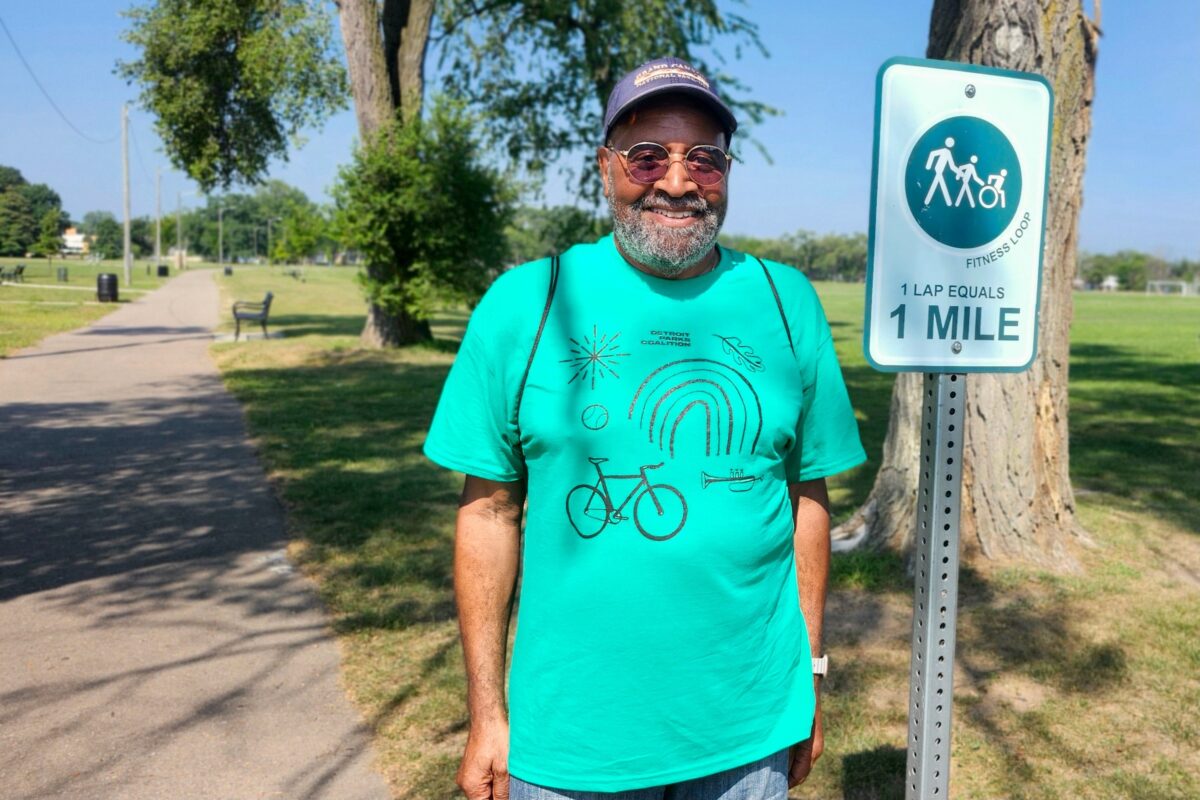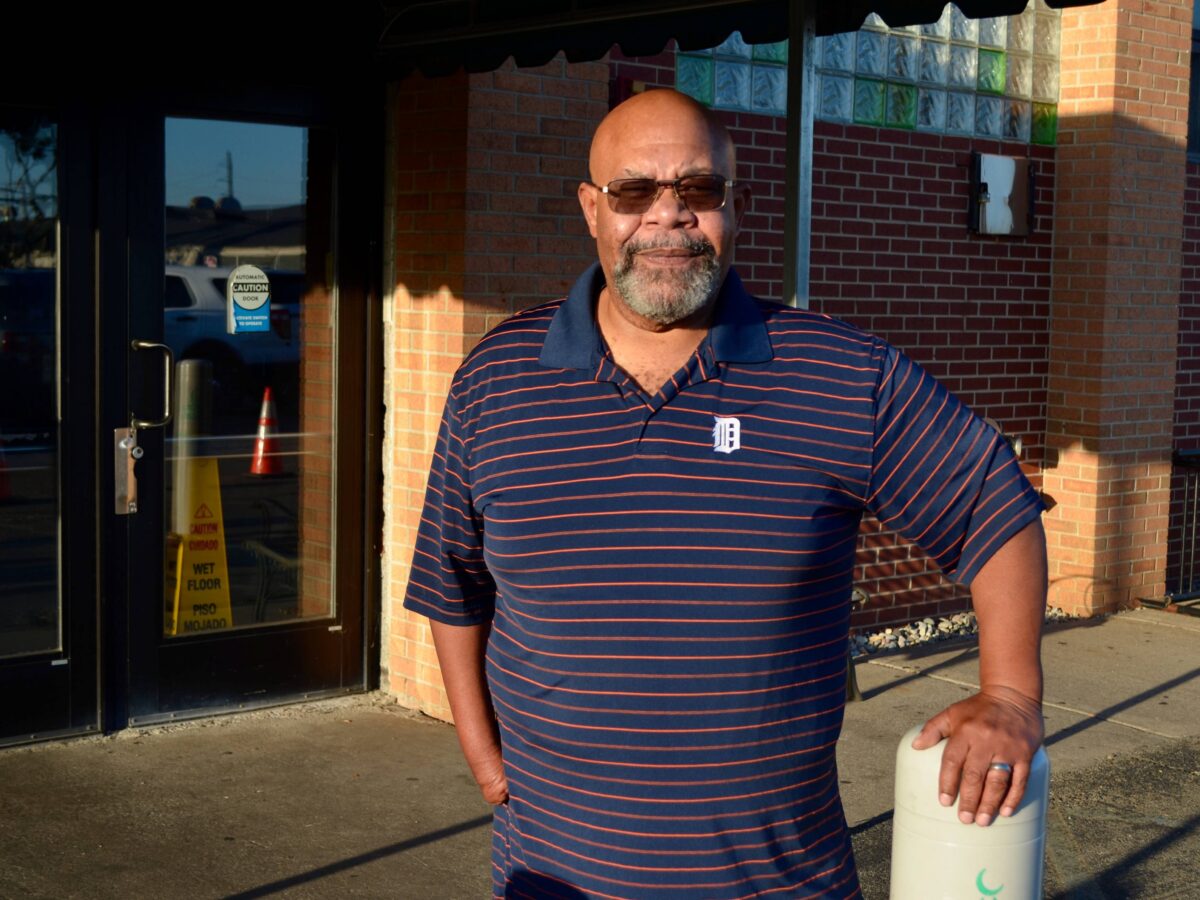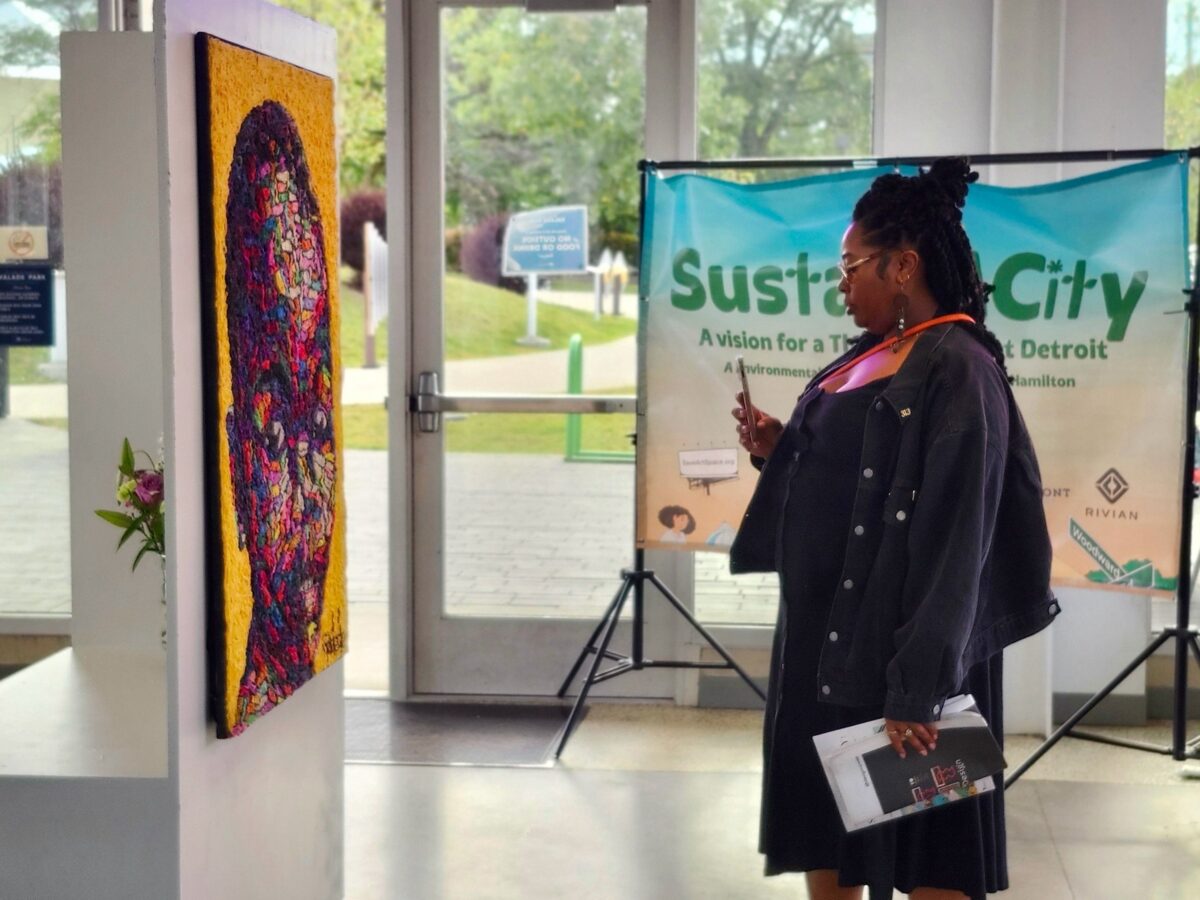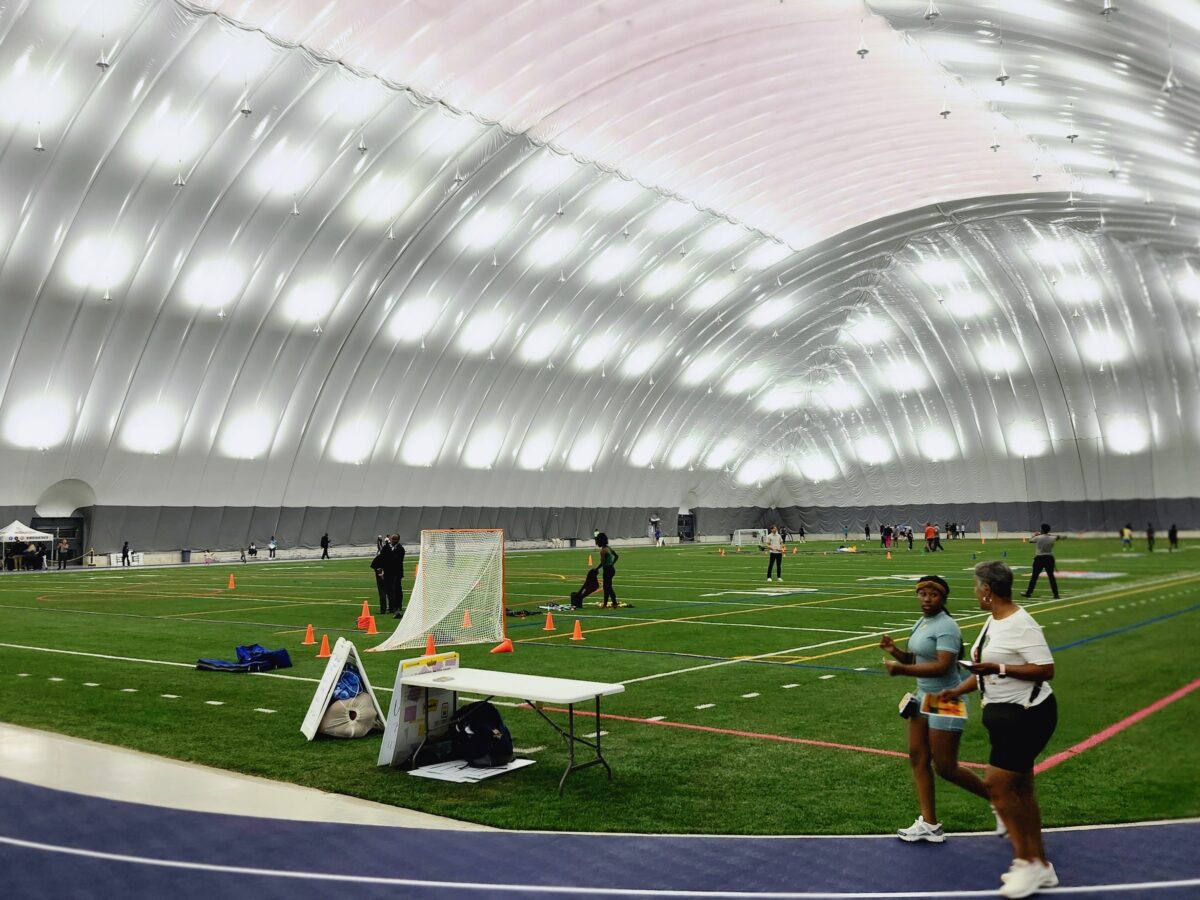Overview:
- We Walk Detroit aims to address public health, social connection, and neighborhood pride.
- “I’ve seen people who thought they couldn’t do it get up and walk,” says Rouge Park walk leader Donulaé T. Knuckles.
- We Walk Detroit’s inaugural season ended Sept. 30. The program is funded for 2026.
In a city where chronic disease rates run high and access to affordable health programs is limited, Detroiters are finding a simple answer: walking together. The We Walk Detroit initiative gives residents a free, safe way to stay active while reclaiming public space.
Launched in June, We Walk Detroit is a collaboration between the Michigan Department of Health and Human Services and the Detroit Parks Coalition. Backed by a two-year grant, the program aims to improve community health and encourage residents to use Detroit’s green spaces.
The program is designed to meet multiple needs at once: public health, social connection, and neighborhood pride.
At Rouge Park, where the program has found a steady footing, 75-year-old Jeanette Myers said she looks forward to Tuesday evenings. “I told my husband, ‘This is where we’re gonna be every Tuesday.’”
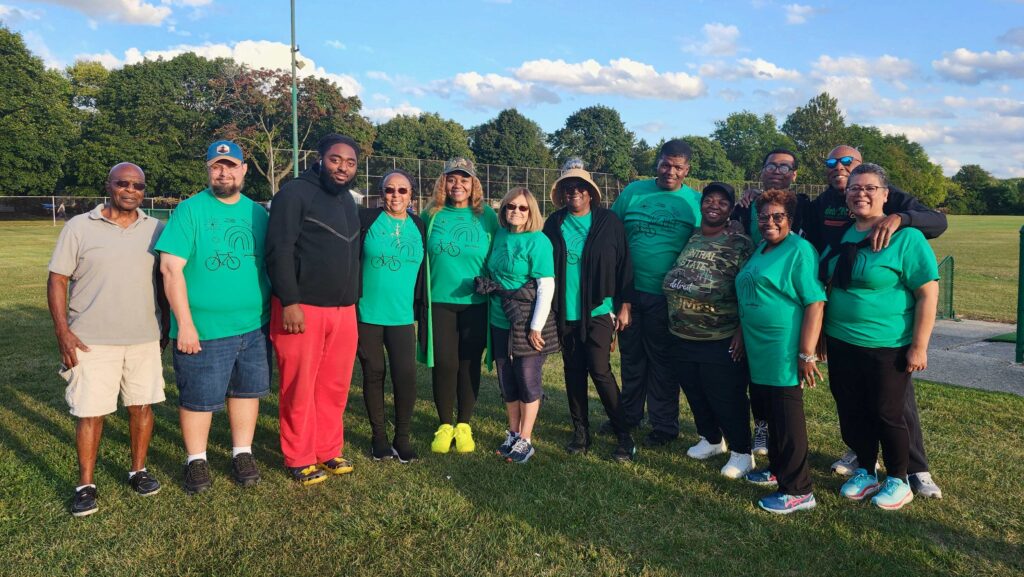
‘Walking is just therapeutic’
Myers maintains an active lifestyle, engaging in some form of physical activity daily. This habit didn’t form until she turned 60, when her son gave her a FitBit, and she said she became aware of how little she walked and all the metrics she wasn’t meeting.
“If you’re past 60, you should be moving. If you don’t move, it will lock up on you, and you can’t move,” Myers said.
She now makes a point to hit 10,000 steps daily, and credits the walking group with providing a safe space to hit that goal twice a week. Her grandson, 22-year-old Jermaine Miller, is the group’s youngest regular walker by far. He said his grandmother pulled him in, but he continued attending on his own.
“I’m starting to do fitness now,” Miller said. “Walking is just therapeutic. I had leg surgery a few years ago, and I didn’t necessarily do what I was supposed to do to keep it up. My body just feels better now.”
Walk leader James Daniel, who organizes at O’Hair Park on Detroit’s west side, said that walking in groups shifts how residents feel about safety and belonging.
“It’s almost like God gave me several more acres that I could take advantage of,” Daniel said. “When people see us out here, they know it’s a safe place to be.”
Rouge’s walk leader Donulaé T. Knuckles, also known as Nurse Knuckles, said showing up matters as much as the exercise itself.
Attendance fluctuates; the group has seen as few as eight participants on days that were either too hot or too wet, to 20 people on a good night.
The impact runs deeper than the numbers, Knuckles said.
“I’ve seen people who thought they couldn’t do it get up and walk,” she said. “Those small steps turn into big steps, all because we’re stepping.”
For her, the program is personal: she survived a stroke at 39. “Our bodies are made for movement,” Knuckles said. “I’m just grateful I can move after all that.”
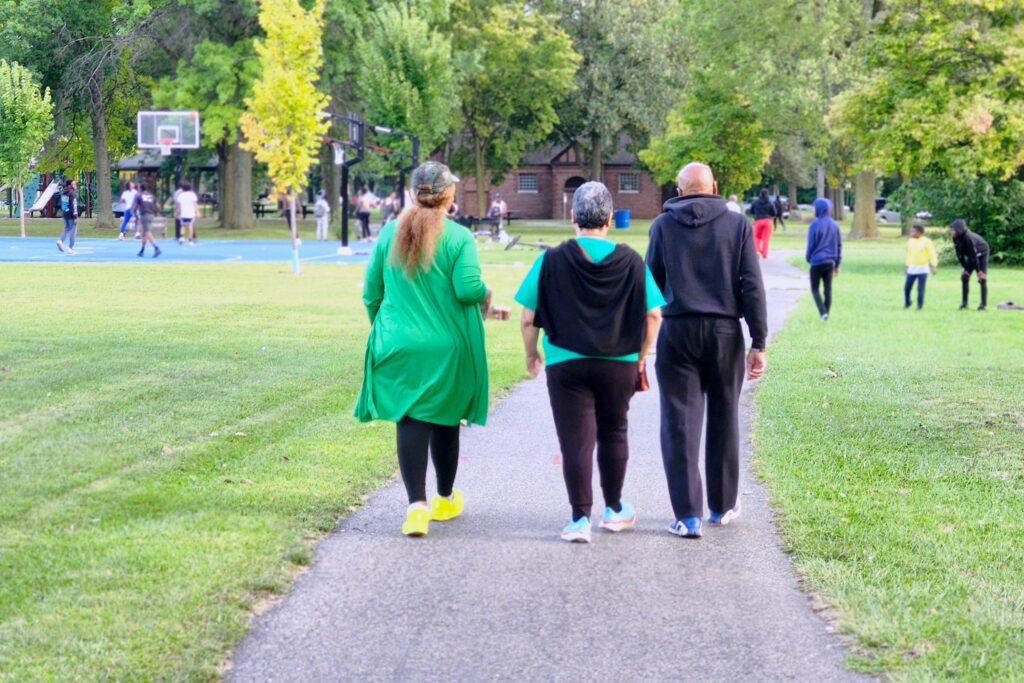
We Walk Detroit receives funding for 2026 season
We Walk Detroit groups are still figuring out how to draw the same level of engagement at every park.
At O’Hair Park, walk leader and avid walker James Daniel said that some mornings, it’s just him. He notes that the park has regular activity outside of organized programming, but speculates the decline in participation is due to young people finding activities in other parts of the city.
“The first year of anything is a test year,” Daniel said. But he remains optimistic.
Every Monday and Wednesday morning, Daniel can be found walking the trail at O’Hair wearing the program’s signature green shirt, hoping that others will come up and ask what his shirt is about.
Detroit has more than 300 parks, many of which are long underfunded and underused. Neighbors say that by coming together for something as simple as a walk, the program is helping to reshape the story of these spaces.
We Walk Detroit’s inaugural season ended Sept. 30. For weeks, the program’s future hung in the balance as state leaders negotiated the 2026 budget, leaving organizers unsure whether the program would survive into the next year.
The uncertainty has since lifted, with a new state budget was signed into law.
“The We Walk Detroit program has been funded for 2026, and we have received our grant agreement from the DHHS,” said Yvette Bass, program manager for the Detroit Parks Coalition.
The coalition has no additional health programming planned for the remainder of the year, although several individual park stewardship groups will continue organizing activities on their own.
At Rouge Park, walk leader Knuckles is committed to keeping the group moving. This fall, she plans to continue trail walks on good weather days, potentially switching to early morning to best accommodate retirees’ schedules.
Rouge does not yet have a recreational center for indoor activities in the winter, but Knuckles said she’s exploring ways to connect walkers with other community resources.
Elsewhere in the city, new spaces are filling the gap. As part of Detroit’s master plan on the east side, the new Chandler Park Fieldhouse provides an indoor track for residents to continue walking this winter, as well as other athletic facilities.
“Just because the program is ending,” said Knuckles, “doesn’t mean we have to stop getting together.”
MORE REPORTING BY AKILAH RUSSELL
Detroiters describe citywide struggle with truck traffic: ‘Our streets are sinking’
Children living within two blocks of I-75 have asthma rates 25% to 42% higher than those living further away from major roads, says Detroit Hispanic Development Corporation’s Rachel Marquez.
Sustain-A-City: Detroit reimagines sustainability through art
Detroit’s creative spirit intersects with environmental advocacy for “Sustain-A-City: A Vision for a Thriving, Resilient Detroit.” The art is showcased on billboards through Sept. 14.
Chandler Park Fieldhouse opens as east side hub for health, hope, community
The dome has been in the Chandler Park master plan since 2014, says the Chandler Park Conservancy’s Alex Allen. American Rescue Plan Act dollars funded the project.

